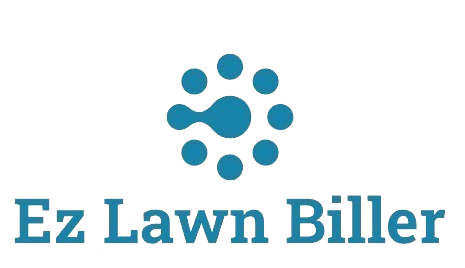Automating your lawn service routes can save time and increase profitability. Discover how to optimize your lawn service routes effectively.
The Ultimate Guide to Optimize Routes for Lawn Services
In the competitive world of lawn care, optimizing routes is crucial for operational efficiency and customer satisfaction. As businesses grow, the complexities of managing service areas, scheduling appointments, and minimizing travel time become increasingly challenging. This guide delves into the essential techniques and strategies to optimize routes for lawn services, ensuring that you can serve your clients efficiently while maximizing your profits. From utilizing technology to understanding your service area better, we aim to equip you with the knowledge you need to excel in route optimization.
Imagine a scenario where your lawn care team finishes jobs on time, clients are satisfied with your services, and your fuel expenses are significantly lower. This is not just a dream; it can be your reality through effective route optimization strategies. Route optimization is the process of determining the most efficient paths for service delivery to minimize costs and time. This article covers various aspects of route optimization, including the use of technology, strategies for planning routes, and tips for enhancing customer service.
We’ll also explore specific software solutions that can assist lawn care businesses in this endeavor, ensuring you have all the tools necessary to succeed. Route optimization is not merely about cutting costs; it’s about enhancing your overall service delivery, which leads to happy clients and a thriving business. Let’s delve into the core strategies to revolutionize your lawn service routing.
1. Understanding the Importance of Route Optimization
Route optimization is vital for any lawn service business looking to improve efficiency and customer satisfaction. By minimizing travel distance and time, lawn care companies can reduce fuel costs, increase the number of jobs completed each day, and ultimately boost profitability. For example, studies have shown that efficient routing can save companies up to 30% in fuel costs. This is a significant expense reduction for any business.
Furthermore, satisfied customers are more likely to become repeat clients. Timely and reliable service builds trust and can lead to referrals, which are invaluable in the lawn care industry. To illustrate the importance of route optimization, consider a lawn care business that has to travel 10 miles across a service area to complete a job. By optimizing the route to cluster jobs geographically, they could reduce travel time to only 5 miles, allowing them to take on additional jobs and improve overall productivity.
In summary, route optimization not only enhances operational efficiency but also directly impacts customer satisfaction and business growth. As we progress, we’ll discuss specific strategies and tools to optimize your routes effectively.
2. Leveraging Technology for Route Optimization
In today’s digital age, leveraging technology for route optimization has become indispensable. Various software tools are available that can help lawn service providers automate their scheduling and routing processes. One such tool is [Lawn Biller Software](https://ezlawnbiller.com/), which simplifies invoicing and service management, allowing you to focus on what you do best—taking care of lawns.
These software solutions can analyze your service area, factoring in variables such as traffic patterns, job types, and customer preferences to create optimal routes. Real-time tracking allows lawn care providers to make necessary adjustments when unexpected delays occur, ensuring that they remain on schedule even with unforeseen challenges.
Additionally, mobile apps tailored for lawn service management can provide technicians with up-to-date information on their jobs, including client maps and service histories. This level of organization not only saves time but also enhances the professionalism of your business. Clients appreciate knowing that their service providers are reliable and efficient.
3. Planning Your Routes Strategically
Planning your routes strategically involves more than just the shortest distance between two points. It requires an understanding of factors such as job types, customer preferences, and traffic conditions. Start by analyzing your current client list and their geographic locations. This allows you to group jobs that are close together, significantly reducing travel time.
For example, if you have multiple jobs in a specific neighborhood, try to schedule them back-to-back. You can even create set routes for regular service clients, which will streamline your planning process. This method not only ensures efficiency but also gives your team a clear understanding of their daily tasks.
Another essential aspect of route planning is considering the time of day. Traffic patterns can vary, and knowing when to avoid certain areas can greatly enhance your route efficiency. By planning your services during off-peak hours, you can avoid delays and ensure that your team reaches each job site promptly.
4. Integrating Customer Preferences into Routing
Integrating customer preferences into your routing strategy is a critical element of enhancing service delivery. By keeping track of when and how customers prefer their lawns serviced, you can optimize scheduling. For example, some clients may prefer morning appointments while others might favor afternoons. By accommodating these preferences, you not only improve customer satisfaction but also create a reputation for reliability and personalization.
Additionally, utilizing a lawn service app like [Lawn Service App](https://ezlawnbiller.com/) can help you gather and analyze customer data effectively. This data can inform your routing decisions by allowing you to see patterns in service requests and preferred timings. Over time, this level of attention to detail will help build long-lasting relationships with your clients.
Moreover, consider implementing a feedback mechanism where clients can share their experiences with your service. This information can provide insights into potential improvements in your routing and scheduling processes.
5. Evaluating and Adjusting Routes Regularly
Once you have implemented a routing strategy, the next step is to evaluate its effectiveness continuously. Collect data on travel times, fuel costs, and job completion rates to analyze the success of your optimization efforts. This ongoing evaluation will help identify areas for improvement, allowing you to adjust routes as necessary.
Tools like [Lawn Service Software](https://ezlawnbiller.com/) provide analytics features that can track your performance metrics over time. This insight can help you make data-driven decisions that enhance your operational efficiency. Regular adjustments may be needed as your client base grows or as traffic patterns change.
Additionally, consider setting up periodic reviews of your routes and scheduling practices. Engaging with your team to discuss potential inefficiencies can lead to innovative solutions. Remember, the goal is to create a continuous improvement cycle where feedback and data analysis lead to better route optimization.
6. Best Practices for Route Optimization
To ensure successful route optimization, consider adopting the following best practices:
- Utilize route optimization software that integrates with your existing systems.
- Continuously gather data and feedback from your team and customers.
- Schedule regular training sessions for your staff on the importance of efficient routing and time management.
- Stay flexible and ready to adapt your routes based on real-time conditions.
- Invest in GPS tracking technology for accurate location data and route adjustments.
By adhering to these practices, you can create a robust framework for optimizing your lawn service routes. This proactive approach not only enhances your operational efficiency but also strengthens your brand reputation in the highly competitive lawn care industry.
Conclusion
In conclusion, optimizing routes for lawn services is not just about saving time and money; it’s about improving client satisfaction and fostering business growth. By understanding the importance of route optimization, leveraging technology, planning strategically, and evaluating regularly, lawn care businesses can enhance their service delivery.
Integrating customer preferences into your scheduling practices ensures that clients remain satisfied and loyal, while the adoption of best practices creates a sustainable model for efficiency. As you implement these strategies, consider how tools like [Lawn Company Computer Program](https://ezlawnbiller.com/) can further streamline your operations.
Ultimately, the success of your lawn care business hinges on your ability to adapt and improve. Embrace the power of route optimization, and watch your business thrive as you deliver exceptional services to your clients, one lawn at a time.




